
HOME
INTRO
SYMBOLS
ALMANAC
ECONOMY
GEOGRAPHY
STATE MAPS
PEOPLE
FORUM
NEWS
COOL SCHOOLS
STATE QUIZ
STATE LINKS
BOOK STORE
MARKETPLACE
GUESTBOOK
CONTACT US


You may double left-click on a word on this page to retrieve its definition. Tweet Follow
Tennessee State Tree
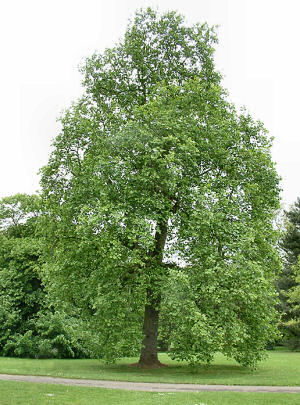
Tennessee State Tree: Tulip Poplar
"The tulip poplar was designated as the official state tree of Tennessee by Public Chapter 204 of the Acts of the 1947 General Assembly.
The act stated that, as no state tree had ever before been designated, the adoption of an official tree seemed appropriate. The tulip poplar was chosen 'because it grows from one end of the state to the other' and 'was extensively used by the pioneers of the state to construct houses, barns, and other necessary farm buildings.'"
("Tennessee Department of State")
PUBLIC ACTS, 1947
CHAPTER NO. 204
SENATE BILL NO. 679
(By White, Cochran)
AN ACT to name a state tree for the State of Tennessee.
WHEREAS, No tree has ever been officially designated as a State Tree for the State of Tennessee; and
WHEREAS, The General Assembly of the State deems it appropriate that such designation be made at this time, and it is generally recognized throughout the State that the Tulip Poplar grows from one end of the State to the other; and
WHEREAS, The poplar was extensively used by the pioneers of the State to construct houses, barns and other necessary farm buildings in the form of slabs or hewn logs and later in the form of sawn lumber, popular being more extensively used than any other species of wood; now, therefore,
SECTION 1. Be it enacted by the General Assembly of the State of Tennessee, That the Tulip Poplar is hereby designated and adopted as the Official State Tree of the State of Tennessee.
SEC. 2. Be it further enacted, That this Act shall take effect from and after its passage, the public welfare requiring it.
Tennessee Law
The following information was excerpted from the Tennessee Code Annotated, Title 4, Chapter 15, Part 3, Section 4-1-305.
Title 4 State Government
Chapter 1 General Provisions
Part 3 State Symbols
Tenn. Code Ann. § 4-1-305 (2011)
4-1-305. State tree.
The tulip poplar is designated and adopted as the official state tree of this state.
HISTORY: Acts 1947, ch. 204, § 1; C. Supp. 1950, § 107.3; T.C.A. (orig. ed.), § 4-108.
Sources...
Shearer, Benjamin F. and Barbara S. State Names, Seals, Flags and Symbols: A Historical Guide Third Edition, Revised and Expanded. Westport, Conn: Greenwood Press, 3 Sub edition, 2001.
"State Symbols." Tennessee Department of State. The State of Tennessee, 2010. Web. 22 Sep 2011. .
The State of Tennessee. Tennessee Code Annotated. Nashville: The State of Tennessee, 2011. Web. 22 Sep 2011. .
Additional Information
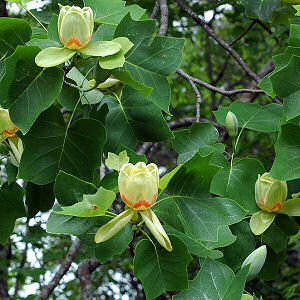
Tennessee State Tree: Tulip Poplar
Liriodendron tulipifera: University of Connecticut Plant Database of Trees, Shrubs and Vines.
Yellow-Poplar (Liriodendron tulipifera): Tree Identification Fact Sheet from the Virginia Tech. Landowner Factsheet.
Plant Profile for Liriodendron tulipifera L. (Tuliptree): USDA, NRCS. 2004. The PLANTS Database, Version 3.5 (http://plants.usda.gov). National Plant Data Center, Baton Rouge, LA 70874-4490 USA.
Liriodendron tulipifera L. (Yellow-Poplar): United States Department of Agriculture: Forest Service: Agriculture Handbook 654: Silvics of North America.
Liriodendron tulipifera (Tulip Tree): Missouri Botanical Garden.
Liriodendron tulipifera (tulip poplar): USDA, NRCS. 2016. The PLANTS Database (http://plants.usda.gov). National Plant Data Center, Baton Rouge, LA 70874-4490 USA.
Liriodendron tulipifera: Integrated Taxonomic Information System (ITIS).
Liriodendron tulipifera: Plants For A Future (PFAF): researching and providing information on ecologically sustainable horticulture.
Liriodendron tulipifera: Search for images of Liriodendron tulipifera with Google.
State trees: Complete list of official state trees from NETSTATE.COM.
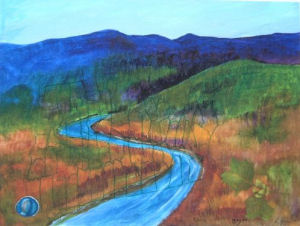
Tennessee state tree print
More symbols & emblems: Complete list of official Tennessee state symbols from NETSTATE.COM.
Tennessee-Tuliptree: Linda Frances state tree prints, Four Winds Gallery, Salido, Colorado.
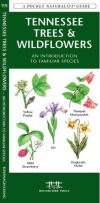
Tennessee Trees & Wildflowers: An Introduction to Familiar Species, by James Kavanagh. Illustration Count: 140. Size: 8.25" H x 3.5" W. Product Form: folded. Publisher: Waterford Press; 1st edition (April 1, 2010) A Pocket Naturalist Guide. Tennessee Trees & Wildflowers is the perfect pocket-sized, folding guide to familiar trees, shrubs and wildflowers.
This beautifully illustrated guide highlights over 140 familiar species and includes a map featuring prominent state-wide botanical sanctuaries.
Laminated for durability, this handy guide is a great source of portable information and ideal for field use by novices and experts alike.
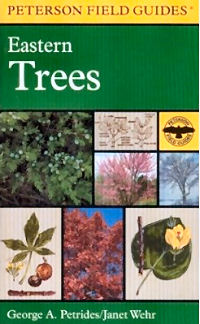
A Field Guide to Eastern Trees (Peterson Field Guides), by George A. Petrides. 448 pages. Publisher: Houghton Mifflin Harcourt (July 15, 1998) This field guide features detailed descriptions of 455 species of trees native to eastern North America, including the Midwest and the South.
The 48 color plates, 11 black-and-white plates, and 26 text drawings show distinctive details needed for identification. Color photographs and 266 color range maps accompany the species descriptions.
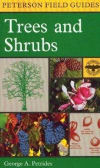
A Field Guide to Trees and Shrubs, by George A. Petrides. 464 pages. Houghton Mifflin Harcourt; Second Edition (September 6, 1973) All the wild trees, shrubs, and woody vines in the area north to Newfoundland, south to North Carolina and Tennessee, and west to the Dakotas and Kansas are described in detail.
Accounts of 646 species include shape and arrangement of leaves, height, color, bark texture, flowering season, and fruit. Clear, accurate drawings illustrate leaves, flowers, buds, tree silhouettes, and other characteristics.
A Field Guide to Eastern Forests: North America (Peterson Field Guide), by John C. Kricher. 512 pages. Publisher: Houghton Mifflin Harcourt (October 15, 1998) This field guide includes all the flora and fauna you're most likely to see in the forests of eastern North America. With 53 full-color plates and 80 color photos illustrating trees, birds, mammals, wildflowers, mushrooms, reptiles, amphibians, butterflies, moths, beetles, and other insects.
National Audubon Society Field Guide to North American Trees: Eastern Region, by Elbert Luther Little. 716 pages. Knopf; Chanticleer Press Ed edition (May 12, 1980) Tree peepers everywhere will enjoy these two guides which explore the incredible environment of our country's forests-including seasonal features, habitat, range, and lore. Nearly 700 species of trees are detailed in photographs of leaf shape, bark, flowers, fruit, and fall leaves -- all can be quickly accessed making this the ideal field guide for any time of year.
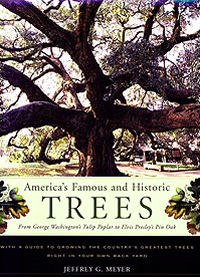
America's Famous and Historic Trees
by Jeffrey G. Meyer
America's Famous and Historic Trees: From George Washington's Tulip Poplar to Elvis Presley's Pin Oak (Hardcover)
by Jeffrey G. Meyer. America's Famous and Historic Trees tells the stories of various trees that Meyer and his cohorts rescued or propagated: oftentimes, when trees were going to be cut down, he and his workers headed off the bulldozers, rescuing the tree with their massive tree hoe. Other trees--like the Indian Marker Pecan in southeast Dallas--were propagated before they died.
Trees : National Champions (Hardcover)
by Barbara Bosworth. Bosworth captures the ineffable grace and dignity of trees with clarity and directness: the green ash that shades a Midwestern crossroads, the common pear that blooms in a Washington field, and the Florida strangler fig with its mass of entwining aerial roots. Her black and white photographs, panoramic views taken with an 8 x 10 camera, show the immensity of the largest species and the hidden triumphs of the smallest

